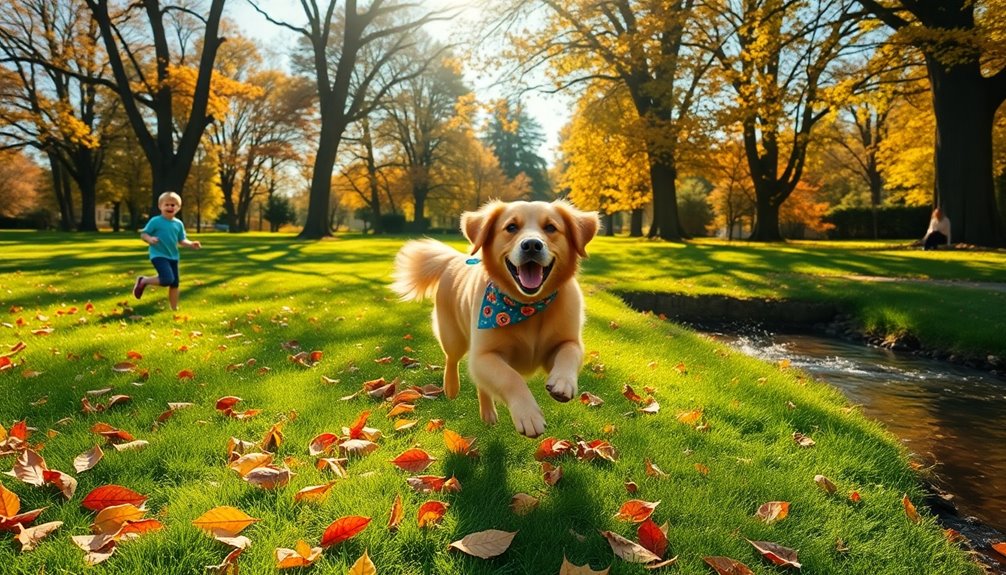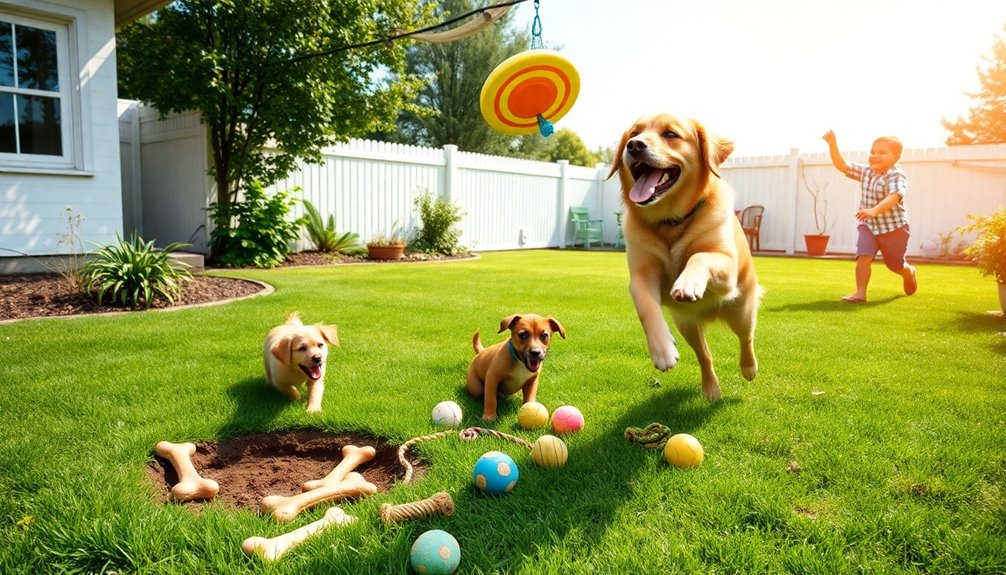When camping with dogs, choose dog-friendly trails and pack essential gear like leash, water, and familiar toys. Prioritize safety by keeping your dog on a sturdy leash, providing plenty of water, and taking regular breaks to prevent overheating. Respect the environment by cleaning up after your pet with biodegradable bags and following campsite rules. With proper planning, you can create a safe, enjoyable experience for both of you—discover more tips below.
Key Takeaways
- Use appropriate gear like harnesses, leashes, and biodegradable waste bags to ensure safety and environmental responsibility.
- Carry ample water, take regular breaks, and monitor your dog for signs of overheating or exhaustion.
- Choose designated dog-friendly trails and adhere to leash rules and campsite regulations for safety and compliance.
- Respect quiet hours, keep dogs under control, and avoid disturbing wildlife or other campers.
- Practice Leave-No-Trace principles by cleaning up waste, minimizing noise, and maintaining the natural environment.

Camping with dogs can be a rewarding experience, but it requires careful planning to guarantee safety and enjoyment for both you and your furry friend. One of the first steps is choosing the right location, especially when it comes to dog friendly trails. Not all trails welcome dogs, so do your research beforehand. Look for trails that are designated as dog friendly, which typically means they’re wide enough for your pup to explore safely without disturbing wildlife or other hikers. These trails often have specific rules, like keeping your dog on a leash at all times, so always bring a sturdy leash and check local regulations. When hitting the trail, carry plenty of water for your dog and take regular breaks to prevent overheating or exhaustion, especially on hot days. Remember, your dog’s safety depends on your vigilance and preparation.
Once you find a suitable trail, it’s important to follow campsite etiquette. Respect other campers and trail users by keeping your dog under control and cleaning up after them. Always pick up waste with biodegradable bags and dispose of it properly—this not only keeps the environment pristine but also ensures everyone can enjoy the area. Keeping your dog on a leash and close to you prevents unexpected encounters with wildlife or other dogs, reducing the risk of bites or conflicts. It also helps prevent your dog from disturbing wildlife or wandering off into unsafe areas. Be mindful of quiet hours and noisy activities, like campfire gatherings or early morning birdwatching, so your dog doesn’t cause disruptions or become distressed.
In addition, familiarize yourself with the specific rules at your campsite, as some locations have strict policies about dogs, such as designated pet areas or restrictions on certain trails. Respecting these rules demonstrates good campsite etiquette and helps maintain a positive environment for all visitors. Bringing familiar items like your dog’s favorite blanket or toy can help ease anxiety in unfamiliar surroundings, making the experience more enjoyable for your pet. Also, always keep your dog supervised and ensure they’re comfortable with the sounds and smells of camping, which can sometimes be overwhelming. Researching dog-friendly trail options beforehand can help you find suitable paths that are safe and enjoyable for your pet. Remember, a little extra effort in planning and respecting the environment will make your camping trip more enjoyable and memorable for both of you, strengthening your bond and creating lasting memories in the great outdoors.
Frequently Asked Questions
How Do I Train My Dog for Camping Trips?
To train your dog for camping trips, start with dog leash training to make sure they walk calmly and stay close. Practice campsite recall methods regularly so your dog responds promptly to commands even in new environments. Use positive reinforcement, like treats and praise, to build trust and obedience. Gradually introduce your dog to the camping setup, keeping training sessions short and consistent, so they feel secure and well-prepared for your outdoor adventures.
What Should I Do if My Dog Gets Lost?
If your dog gets lost, act quickly by using lost dog recovery techniques like calling their name and searching nearby areas. Contact emergency contacts and local shelters immediately. Use a recent photo and description to help with flyers or social media posts. Stay calm and keep searching, as quick action increases the chances of recovery. Remember, staying organized with emergency contacts streamlines your efforts and improves your dog’s chances of safe return.
Are There Specific Vaccinations Required for Camping With Dogs?
Imagine your dog as a tiny, furry superhero, ready to conquer the wilderness—minus the mandatory costume, of course. To keep your canine adventurer safe, make certain they’re up-to-date on their vaccination schedule, including rabies and distemper shots. While no specific camping vaccinations are required, prioritizing dog health through proper vaccinations reduces the risk of illness and keeps your pup ready for spontaneous forest adventures.
How Can I Minimize My Dog’s Environmental Impact?
To minimize your dog’s environmental impact, always pick up and dispose of eco-friendly waste properly, avoiding contamination. Keep your dog on designated trails to prevent wildlife disturbance, and avoid loud noises that could scare animals. Use biodegradable waste bags and stick to established campsites. By respecting nature and managing waste responsibly, you help safeguard ecosystems and ensure future generations can enjoy outdoor adventures with their dogs.
What Are Signs of Heatstroke in Dogs During Camping?
While the sun blazes overhead, you notice signs of heatstroke in your dog: excessive panting, drooling, weakness, and glazed eyes. Preventing heatstroke during camping means keeping your dog cool, offering plenty of water, and ensuring shade. If your dog shows these symptoms, act fast—move to a cooler area, apply cool water, and seek veterinary care. Recognizing these signs early can save your dog’s life in the wild.
Conclusion
Camping with dogs can be an rewarding experience when you follow the right gear, safety tips, and leave-no-trace principles. Did you know that over 70% of dog owners take their pups on outdoor adventures? Embrace responsible camping to guarantee unforgettable memories for both you and your furry friend. By respecting nature and keeping safety in mind, you’ll create a bond that lasts a lifetime. So gear up, stay safe, and enjoy every moment with your loyal companion.










